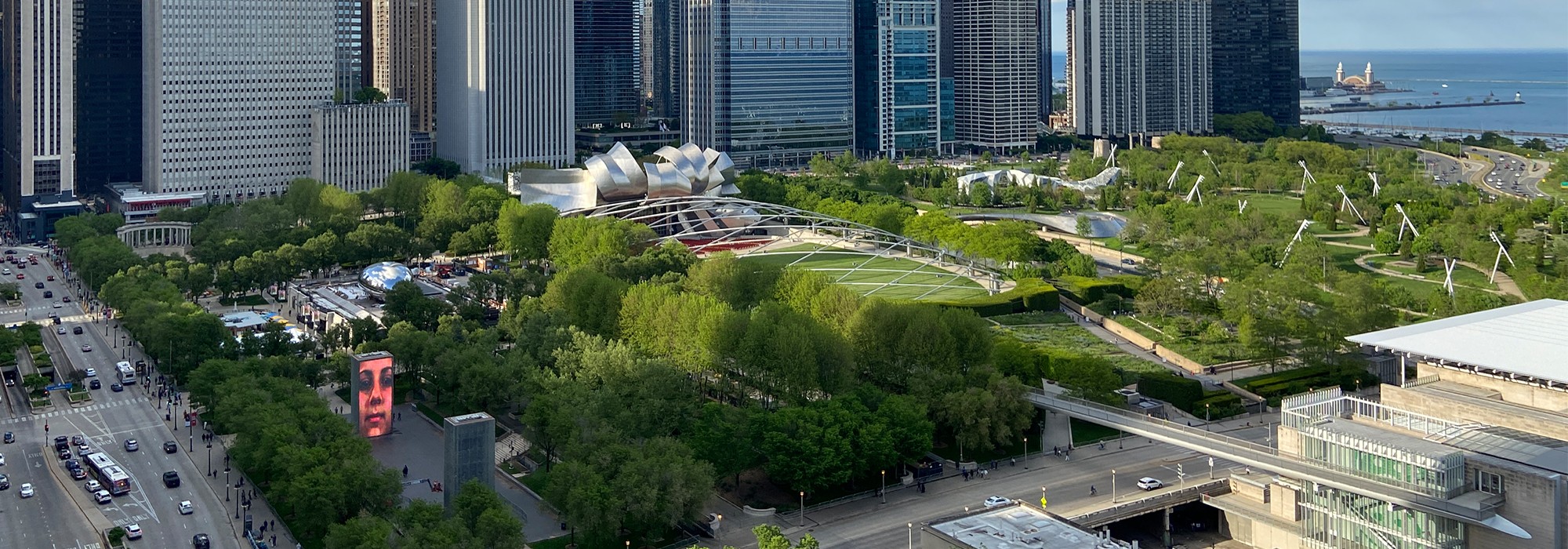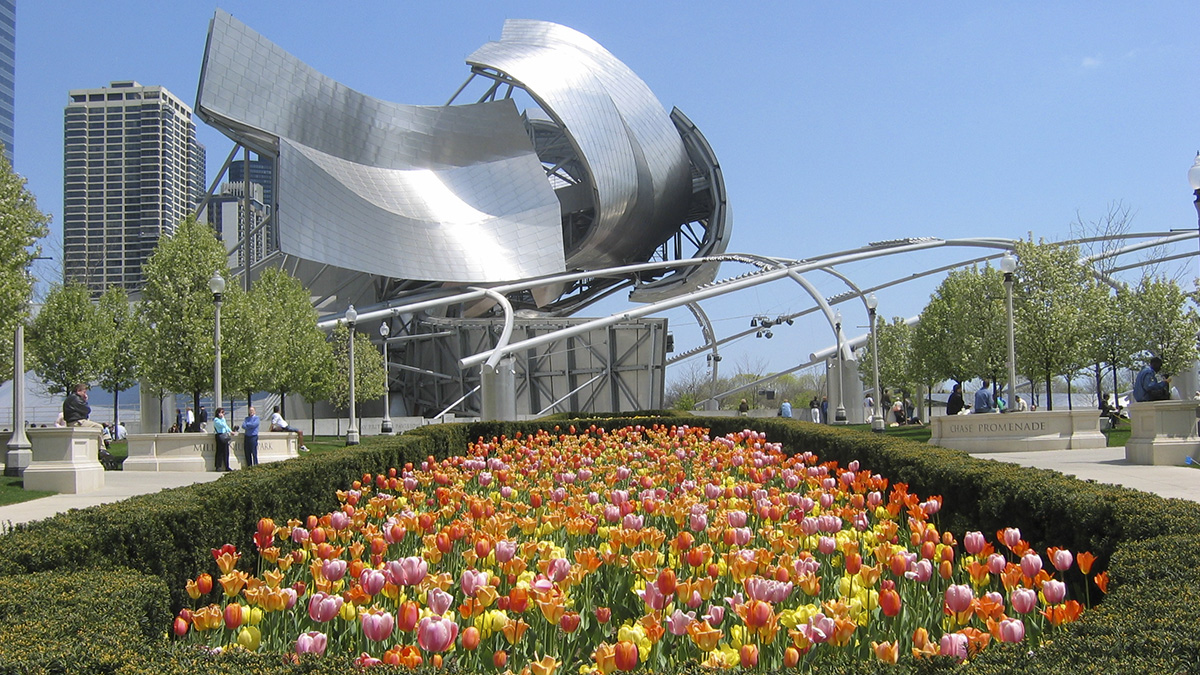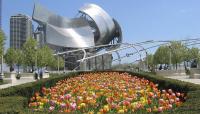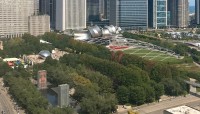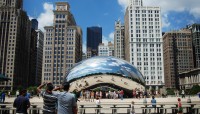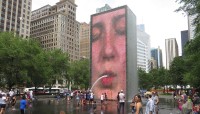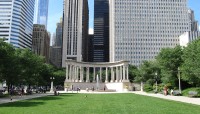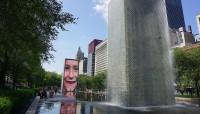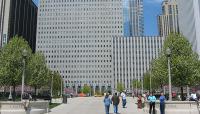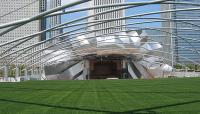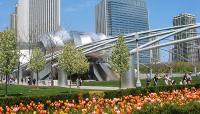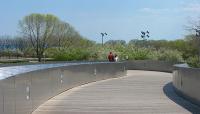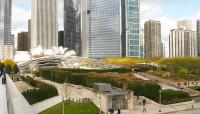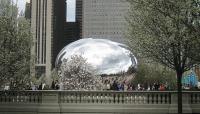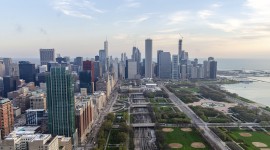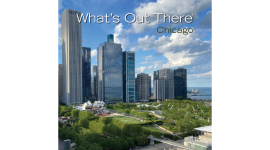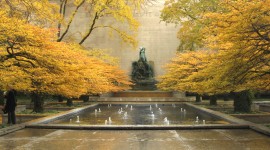Landscape Information
This 24.5-acre park is situated to the northwest of the 319-acre Grant Park. Between 1852 and 1997, the land that is now Millennium Park was cluttered with parking lots, railway lines, and a station operated by the Illinois Central Railroad. Mayor Richard M. Daley convinced the railroad to donate its air rights to the City, and Skidmore, Owings & Merrill (SOM) developed a master plan to construct a park atop subterranean parking and railroad infrastructure.
Opened in 2004, the park includes several amenities laid out as an extension of Grant Park’s outdoor rooms defined by mature sycamore, honey locust, and maple trees. At the heart of the park, the Jay Pritzker Pavilion includes a 4,000-seat bandshell designed by Frank O. Gehry & Associates (now Gehry Partners). A serpentine pedestrian bridge, also designed by Gehry, connects Millennium Park to Maggie Daley Park to the east. To the south of the Pavilion, the Great Lawn provides flexible space for 7,000 people. Beyond that, the three-acre Lurie Garden, designed by landscape architects Gustafson Guthrie Nichol and plantsman Piet Oudolf, offers a diverse and evolving collection of thematic plantings inspired by Midwestern ecosystems. West of the Lurie Garden, the 620-foot-long Nichols Bridgeway, designed by Renzo Piano Building Workshop, spans Monroe Street to connect the park to the Art Institute of Chicago. Nearby, Crown Fountain, by artist Jaume Plensa, is an interactive public art exhibit that features a black granite reflecting pool and two 50-foot towers that display videos of 1,000 faces spewing water through pursed lips. To the west of the pavilion, the polished surface of Anish Kapoor’s Cloud Gate (“the Bean”) reflects the surrounding city. The eight-acre, Beaux-Arts Chase Promenade provides an outdoor exhibit space and connects two outdoor galleries. In the northwest corner of Millennium Park, Wrigley Square comprises a lawn, a fountain, and a replica of the peristyle that stood in Grant Park between 1917 and 1953.



